Affairs: Paris 2024 / Global
Going for gold
As the Summer Games approach, we speak to seven contenders – from a wrestler who’s also an MP to a ‘sports soldier’ – about their unique journeys to Paris 2024.
The International Olympic Committee often points out that it isn’t countries competing at its events but National Olympic Committees (nocs). And it probably still likes to think of the Games as a competition for gifted amateurs rather than professionals – admirable, perhaps, but not entirely true.
In Paris this summer, about 10,500 athletes from 206 nocs will test their skills in 32 sports across 329 events, aiming to bag one (or more) of the 5,084 medals that are up for grabs. To assist them, their countries (sorry, nocs) employ the full might of their sporting-industrial complexes – for example, Canada spent about €1.6m for every swimming medal that it won in Tokyo. They do this because victory at the Olympics proves that you’re the best in the world – and that’s an invaluable soft-power tool.
Here are seven athletes vying to bring home something shiny for their compatriots this summer.
1
the fencer
Alexandra Ndolo
Kenya
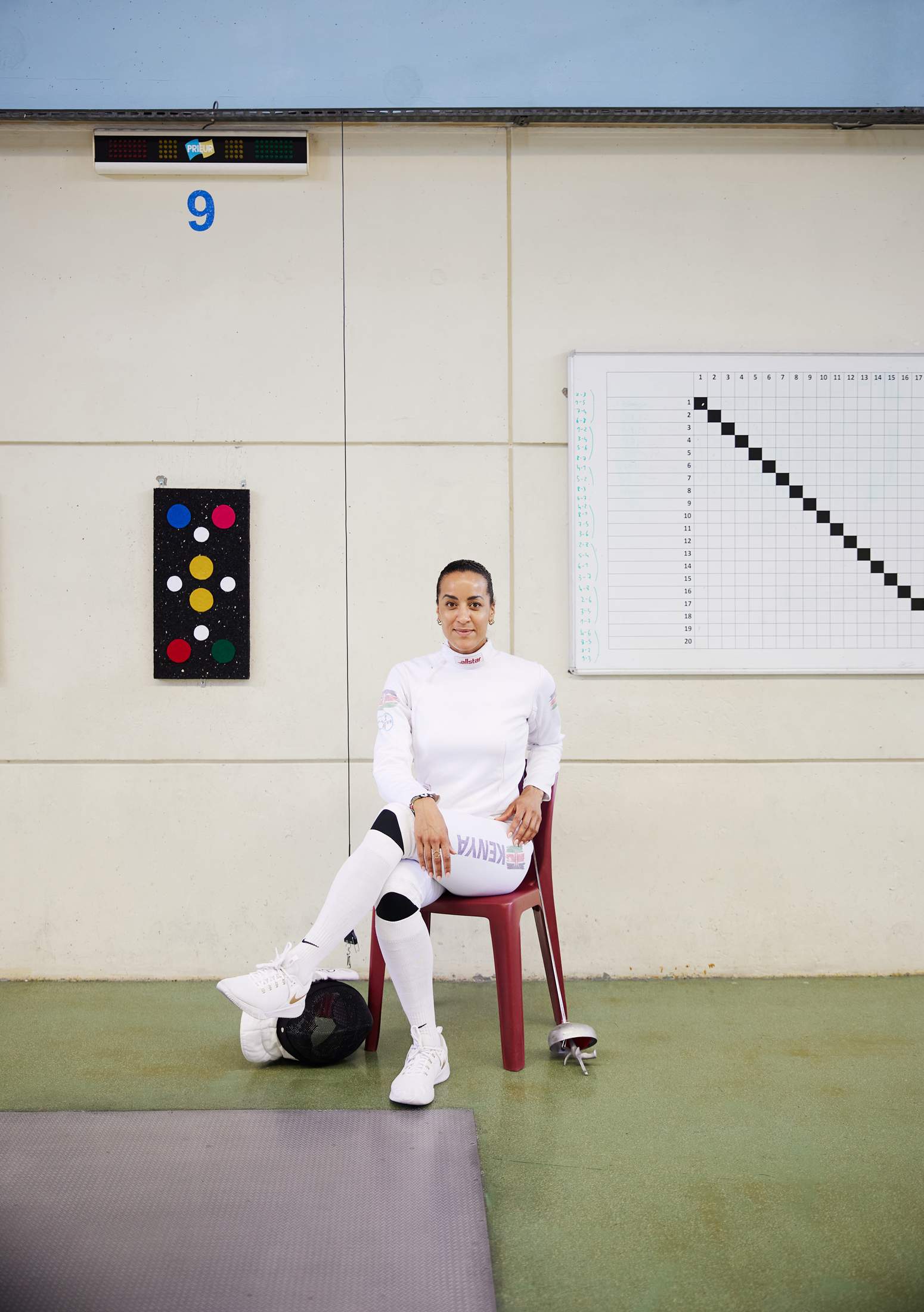
Heavy rain has left the running track at Nairobi’s Nyayo National Stadium unusable and marabous stalk the wet lawn. The athletics qualifiers are delayed and people are huddling with tea and mandazi, a sort of cardamom-spiced doughnut. Among them is 37-year-old fencer Alexandra Ndolo. Neither the grey sky nor the long wait has dampened her mood. After all, she has already secured her ticket to Paris and will be the first Olympian to represent Kenya in the sport.
Ndolo was born to a Kenyan father and a Polish mother, and raised in northern Bavaria. She took up modern pentathlon at school, where her agility was quickly recognised. When she was 14 she was offered a place at a fencing boarding school, though her parents had to turn it down for financial reasons. But Ndolo persevered and became a professional fencer at the age of 21. She then enlisted in the Bundeswehr to become a “sports soldier” (nearly a third of Germany’s Olympic athletes are in the army) a few years later. “Basic training was interesting,” she says. “I realised that I could push my physical limits further than I thought.” This stood her in good stead. In 2017 she won silver at the European Fencing Championship, then another silver at the Fencing World Championships in 2022.
After competing for Germany for 15 years, Ndolo decided to represent Kenya instead. The move was partly born of her emotional connection to her late father but she also felt that she could make a bigger difference by representing a nation that had almost no fencing tradition. In 2019 she co-founded the Kenya Fencing Federation. “What I love about this country is that people will appreciate anyone who is representing them, no matter what the sport is,” she says. “And now that I have qualified for the Paris Olympics, they are really excited.”
What Kenyan fans might lack in fencing expertise, they make up for in enthusiasm. At the stadium, the crowd gives Ndolo a warm welcome. “I am so proud that Kenya can take a fencer to the Olympics,” says the compere, former 400m hurdler Rose Tata-Muya. As she leaves, the receptionist at Ndolo’s gym calls out, “Make us shine over there.”
2
the kite foiler
Max Maeder
Singapore
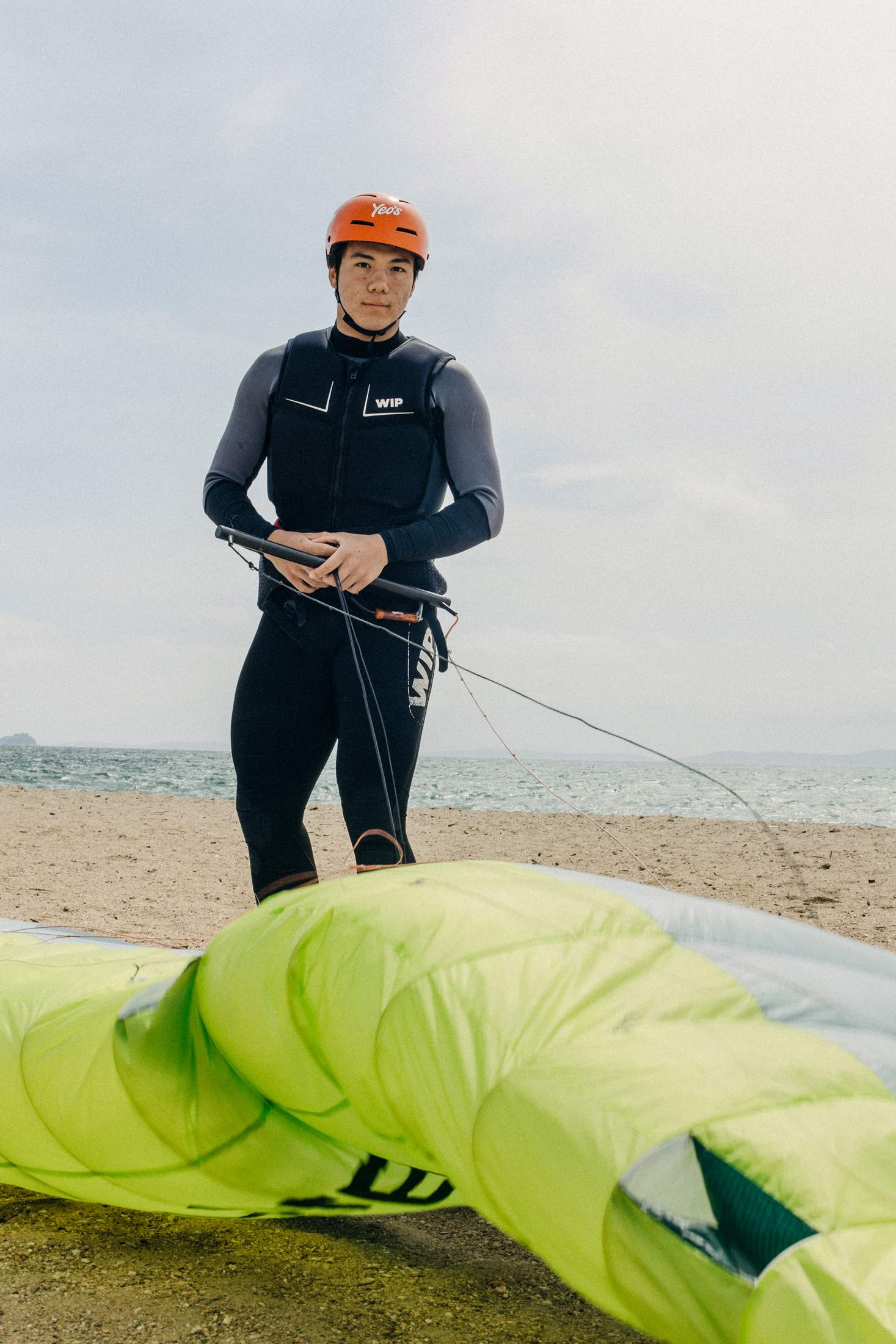
Max Maeder grew up on the water. The 17-year-old was born in Singapore to a mixed-heritage family – his father is Swiss, while his mother is Singaporean – but he spent much of his childhood on Sulawesi, an Indonesian island east of Borneo. There, at the diving resort that his family owns, Maeder tried kitesurfing for the first time at the age of six. Just five years later he was ready to start competing. By then, however, he had switched to kite foiling, a slightly different, more advanced form of the sailing sport, which, along with Maeder, will be making its Olympic debut this summer in France.
As in kitesurfing, the foil kite harnesses wind power but the sailor stands on a board that glides like a magic carpet as high as a metre above the water, with a hydrofoil (a structure comprising a mast and two wings) below. This allows for even greater speeds than kitesurfing. Maeder compares the hydrofoil mechanism to an “underwater aeroplane”. With enough wind power from the kite, it pushes the board high, helping it to glide. In the right conditions, sailors can reach speeds of up to 80km/h.
“As soon as I got up on the hydrofoil and started floating above the surface of the water, I was immediately infatuated,” says Maeder, recalling his first few years in the sport. “I enjoyed it more and more.”
Maeder was home-schooled, which gave him a schedule that was flexible enough to let him fit in some training around studying. He spent his formative years glued to the board and, like a foil kite in a gusty harbour, his career soon began to soar. In August 2023 he claimed the Formula Kite gold medal at the World Sailing Championships in the Netherlands; the following month he clinched Singapore’s first gold at the quadrennial Asian Games. And he capped off the year by winning the Youth Sailing World Championships, held in the Brazilian resort of Armação dos Búzios.
When monocle meets Maeder, he is in Hyères in the south of France, training for the Formula Kite World Championships in May – an important lead-up event to Paris 2024. “It’s a great privilege and I’m excited to compete,” he says. “I feel pride for the nation and all of the things that come with being an athlete preparing for his debut at the Olympics. In other words, I’m no different from the other competitors.”
Maeder is one of a small number of athletes who Singapore will be sending to the Olympics this summer. Since the country began participating in the Games in 1948, it has won a total of five medals: two bronze, two silver and one gold. For much of his athletic career, Maeder didn’t even consider the Olympics as a possibility because kite foiling hadn’t yet been accepted as an official discipline. Now he is preparing to compete in races off the coast of Marseille, where many of the water-based sports will be hosted this summer. Despite his youth, he is already a seasoned professional. “In terms of experience, I am no longer a rookie,” he says, laughing.
3
the long jumper
Ivana Spanovic
Serbia
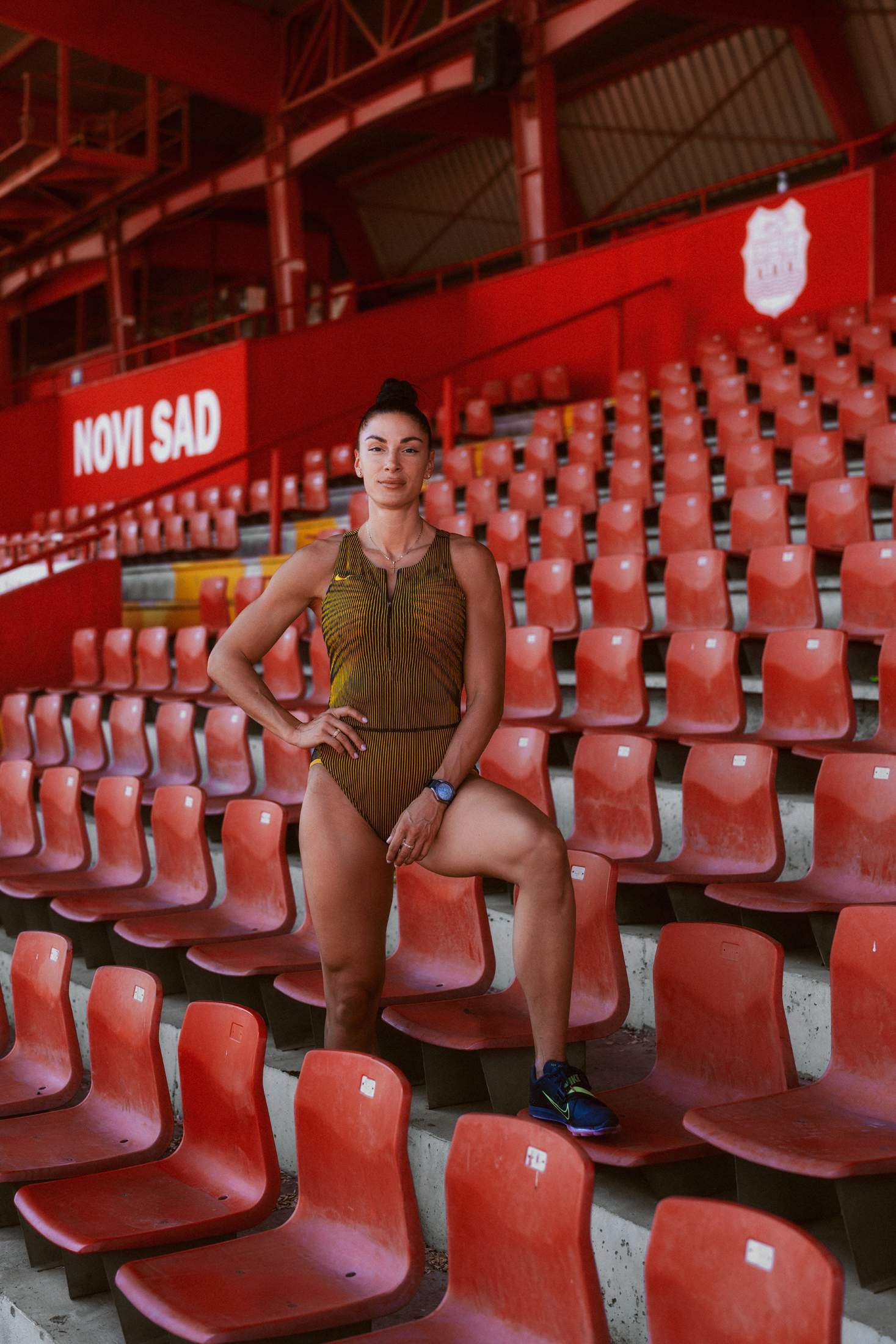
Ivana Spanovic is used to racking up firsts. In 2013 she became the first Serbian to win a medal at the World Athletics Championships. Then she became the first to win gold at the World Athletics Indoor Championships in 2018. Last year, in Budapest, she became the world champion in the women’s long jump – and, naturally, the first Serbian track-and-field athlete to win an outdoor world title. This summer, Spanovic will be Serbia’s best hope for another first: a gold medal in an Olympic athletics event. The stakes are high. She will be 34 by the start of the Games so Paris is likely to be her last tilt at the title.
But as she prepares for her fifth Olympics, Spanovic insists that she isn’t feeling the pressure. “I’m enjoying competing more than ever,” she tells monocle from a training camp in Dubai. “I became the world long-jump champion at the age of 33 with a new personal best and a national record. That was a validation of smart, dedicated work. I’m looking forward to bringing the same energy to Paris in the race for the only gold medal that I’m missing.”
Spanovic considers her two decades of experience to be her “greatest ally”, though she has endured plenty of misfortune along the way. In 2017, for example, she narrowly missed gold at the World Championships when what could have been a winning jump was foiled by the number on her vest coming loose and marking the sand. Such mishaps have taught her to “control emotions and be calm until the next chance comes along”. Adopting this approach, she says, helped her to claim her first world indoor title six months later.
Spanovic is Serbia’s biggest athletics star but she remains a member of her local club in Novi Sad. She tells monocle that she wants to “stay and live in the country, and involve Serbian people, making them feel proud and inspired”. She has certainly achieved that – and never more so than on those electric nights at Belgrade Arena in 2017 and 2022, when she won gold medals at the European and then world indoor championships, respectively. “Those were my favourite and most emotional competitions,” she says. Spanovic might have to add to that list if she manages to see out her career with a final gold medal in Paris.
4
the archer
Satsuki Noda
Japan
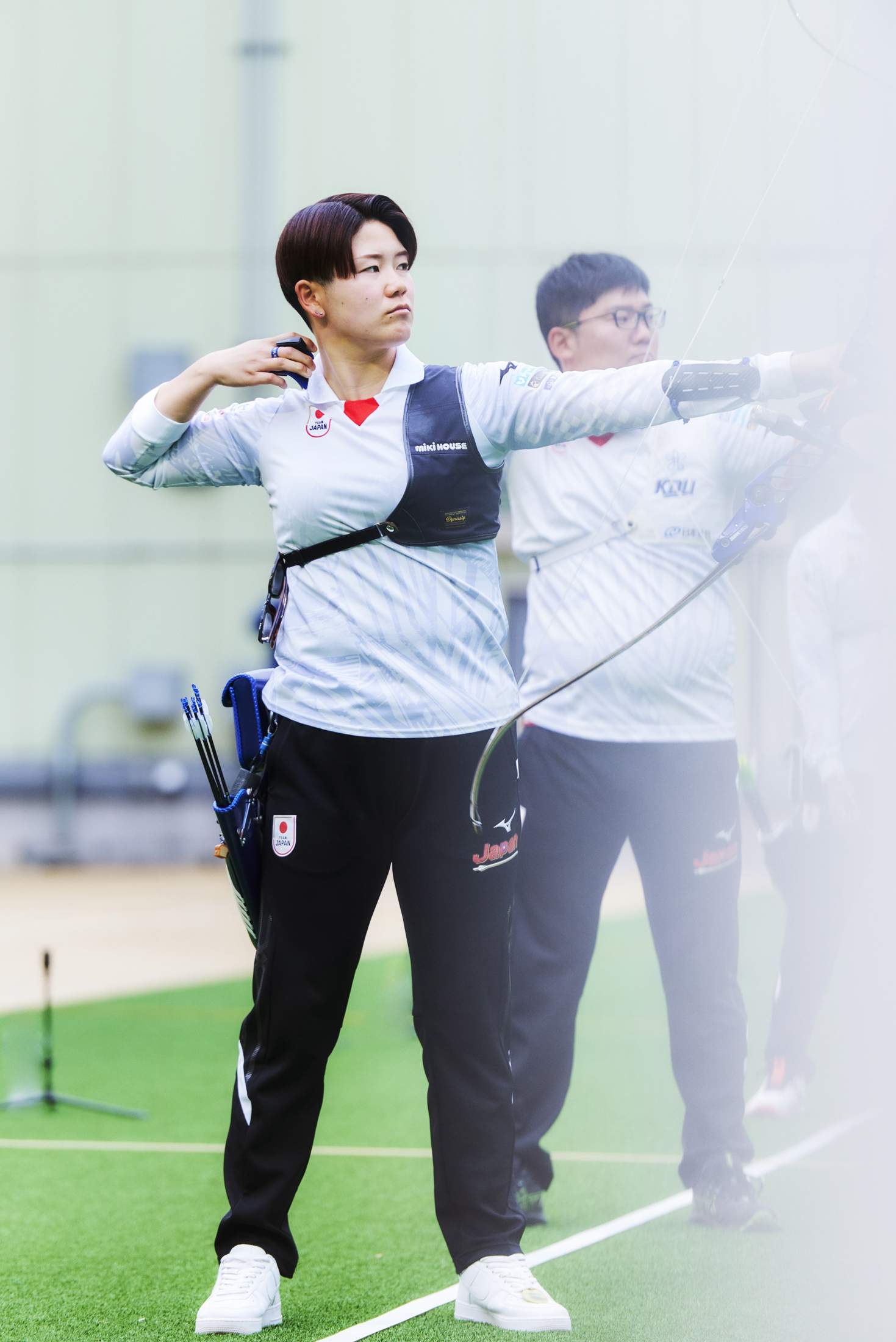
Under grey skies at her first world championships, Japanese archer Satsuki Noda faced the ultimate challenge. Locked in a tight quarterfinal against South Korean Olympic medallist Kang Chae-young, she found herself in a single-arrow tie-breaker with Olympic qualification on the line. When Kang shot true, Noda not only had to match her 10 points (a bull’s eye) but produce a better score. Drawing her bow, she delivered her arrow with precision: it traversed the 70-metre distance to land centimetres closer to the centre than her opponent’s, securing her a ticket to Paris. “To win that shoot-off on a double 10 filled me with happiness and gave me a huge confidence boost,” says Noda, who took home a bronze medal.
A little more than six months since that day in Berlin, monocle visits Noda at the Ajinomoto National Training Centre in Tokyo’s Kita ward. In the open-air shooting range, the 23-year-old practises alongside her fellow national team members. She exudes calm from one arrow to the next. “In competitions, I try to keep a smile on my face,” says Noda. “It helps me to remain calm. A frown or strained look can pull you down. In archery, mistakes happen. There’s no such thing as the perfect match, so you can’t let an error hold you back.”
This focus has helped her to remain grounded after an impressive rise through the ranks. Having taken up the sport in high school, Noda enrolled on the archery programme at Kindai University in Osaka. There, she developed the strength, form and technique that yielded her a national title while she was still a student. “The aim is to avoid even the slightest deviations,” she says. “Once you lose your form, it begins to affect your scores.”
Her footwear of choice is Nike’s Air Force 1. The bestselling streetwear staple, originally designed as a basketball shoe, has been her competition trainer since university. “The sole is firm and almost completely flat, which provides a stable base,” she says. Three years after watching the Tokyo Olympics as a university student, Noda will stand shoulder to shoulder with the world’s best archers. “Paris will be my first Olympics but, regardless of that, I aim to have a challenger mindset.”
5
the judoka
Leonardo Gonçalves
Brazil
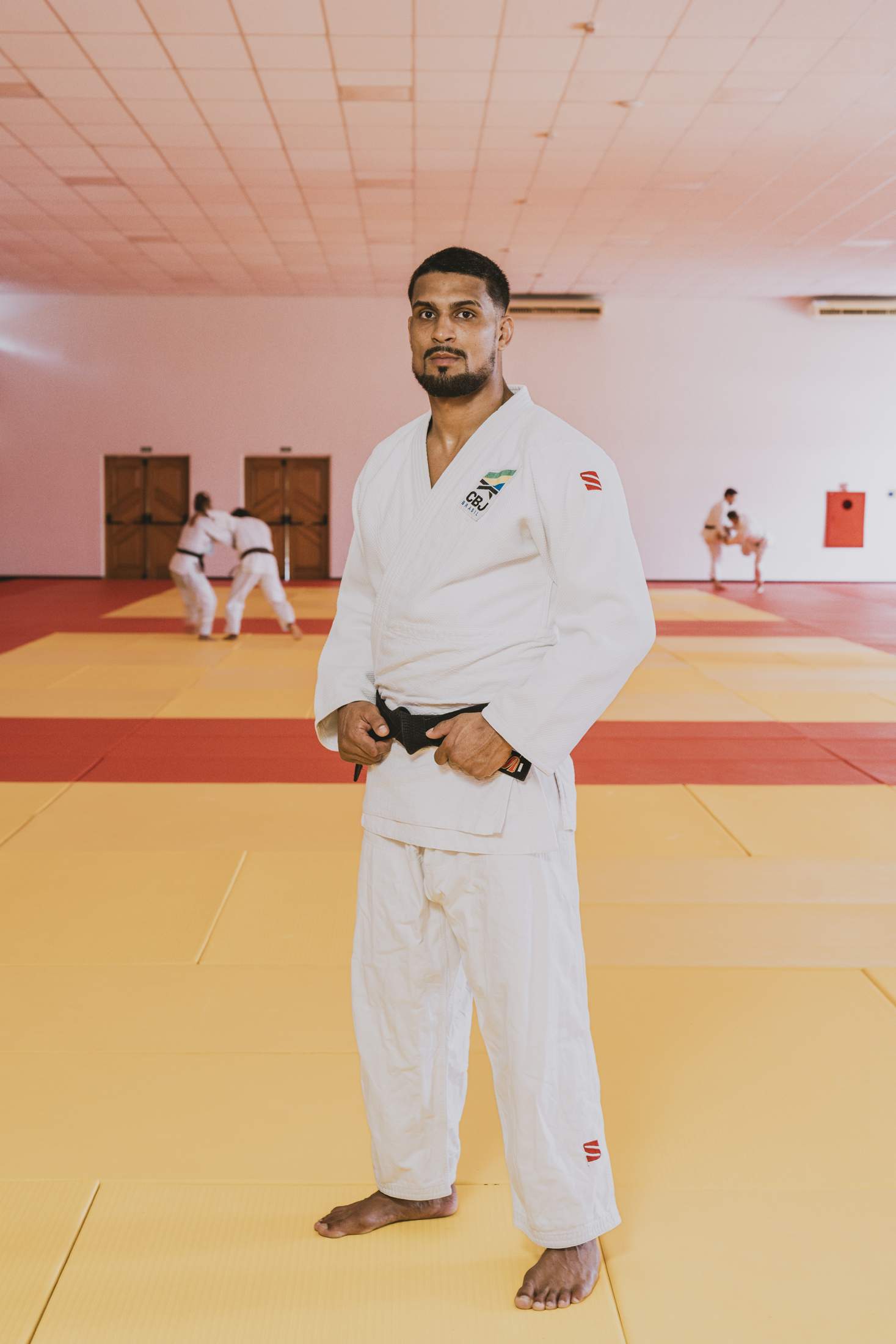
In common with many Brazilians, Leonardo Gonçalves’s first sporting passion was football but it was judo that made him a star. In Paris, the 28-year-old martial artist will make his Olympic debut competing in a sport that has brought his country 24 medals – the most of any discipline – since 1964, when it was first introduced to the Games. While sports such as football or volleyball are more commonly associated with Brazil, it’s likely that most of the nation’s spectators will have their eyes trained on the 15 separate events on the judo mat this summer.
Gonçalves, who will be competing in the 100kg category, hails from Iguape, a municipality with a population of about 31,000 in the countryside outside São Paulo. In 2016 he moved to the southern city of Porto Alegre to train at the Sogipa Club, one of the nation’s most celebrated judo centres. When monocle asks Gonçalves why Brazil excels at the sport, he explains that the country also does well in other martial arts, such as jiu-jitsu – a phenomenon that he attributes to large-scale Japanese immigration in the first half of the 20th century. “Our judo is similar to the version in Japan,” he says. “The people who came to Brazil influenced the sport heavily. In my city, for example, there’s a significant Japanese community. We learnt judo from them, adding a special Brazilian touch.”
Gonçalves’s pre-Paris schedule is intense. monocle meets him at a training session in the city of Pindamonhangaba as he prepares for the World Judo Championships in Abu Dhabi in May. “We will train hard for these championships,” he says. “But our main focus is the Olympics.”
Though Gonçalves will be part of a large and promising Brazilian contingent in Paris this summer, he says that it’s not easy being an athlete in his country. “We go through a lot to become professionals,” he says. “Not everyone manages to get support.” While the country needs to do better when it comes to grass-roots funding, especially among poorer communities, there will be no lack of enthusiasm when the 185cm-tall judoka takes to the mat in the French capital, hoping to secure his country’s 25th medal in the sport.
6
the wrestler
Zhan Beleniuk
Ukraine
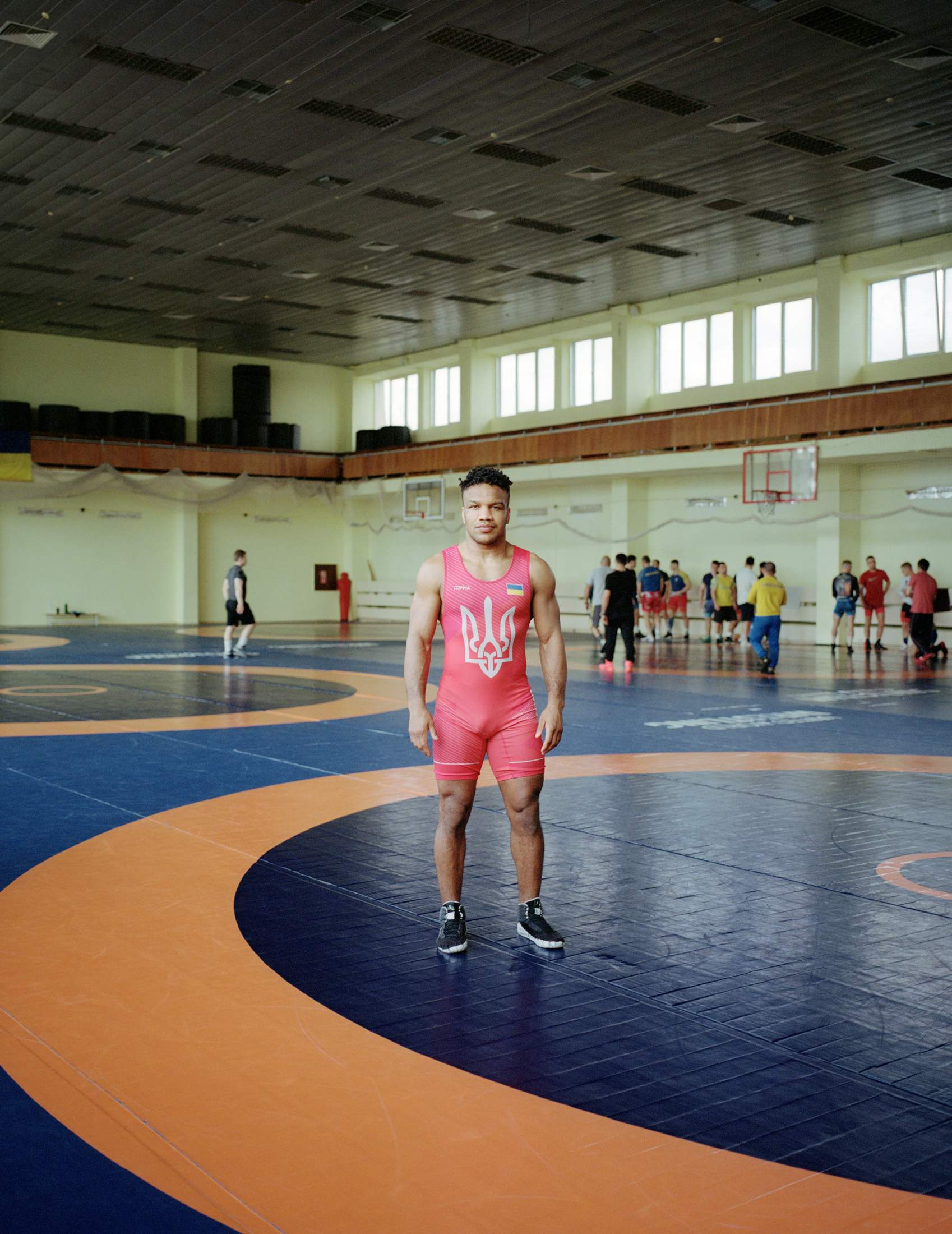
Zhan Beleniuk is a Ukrainian Greco-Roman wrestler, Olympic gold medallist and member of parliament. He isn’t the only one mixing sport and politics in his country: former heavyweight champion boxer Vitali Klitschko is currently the mayor of Kyiv, while footballer Andriy Shevchenko, winner of the 2004 Ballon d’Or, ran for parliament after retiring.
“When a country goes through such difficult, heart-breaking moments, it’s natural for people to become involved in politics,” says Beleniuk. This summer in Paris, three years after winning gold at the Tokyo Olympics in 2021, he will carry the expectations of his war-torn nation on his shoulders.
Born to a Ukrainian mother and Rwandan father in Kyiv shortly before the collapse of the ussr in 1991, Beleniuk’s childhood was marked by the economic turmoil that faced the newly independent former Soviet states. Further shock came when his father died during the Rwandan civil war. “But my childhood was filled with love,” he says. “I didn’t feel those responsibilities weighing down on me. Instead, my mother and grandmother shielded me and gave me the space to grow and develop.”
The pivotal moment that changed Beleniuk’s life came almost by chance. “When I was nine years old, my friend took me along to his sports club, where I tried out Greco-Roman wrestling,” he says. “From then on, I haven’t looked back.” Beleniuk began winning medals at international championships in 2009. Nine years later, he won his first Olympic medal: a silver at the Rio Games.
After the pro-European revolution that shook Ukraine’s politics in 2014, Beleniuk became a high-profile advocate for the pro-democracy movement. “As a representative of this country and a black Ukrainian, I understand my responsibility to counter Russia’s disinformation,” he says. “They are seeking to paint my country as a racist, fascist place and discredit it on the international stage.”
Ukraine’s first black MP has been a member of delegations travelling to Africa, a continent where pro-Russian sentiment remains relatively strong. “Many there still see us as Russia’s younger brother,” says Beleniuk. “They don’t understand what Ukraine is or who Ukrainians are.”
Another place where Beleniuk is seeking a shift in attitudes is at the International Olympic Committee (ioc). The body recently ruled that Russians could compete at Paris 2024 as neutral athletes, undoing a ban on their participation that was put in place in 2022. “If the reason for the ban hasn’t gone away, why has the ioc gone back on it?” asks Beleniuk. “Many of those athletes are involved in Russia’s propaganda machine. There is no place for them at international competitions.”
Beleniuk tells monocle that, like any athlete, he is dreaming of winning a gold medal this year in Paris. “But more importantly, I want to represent my country with dignity,” he says. “I’m proud of what I have achieved for Ukraine. It’s thanks to the country and its people that I’m here.”
7
the surfer
Sanoa Olin
Canada
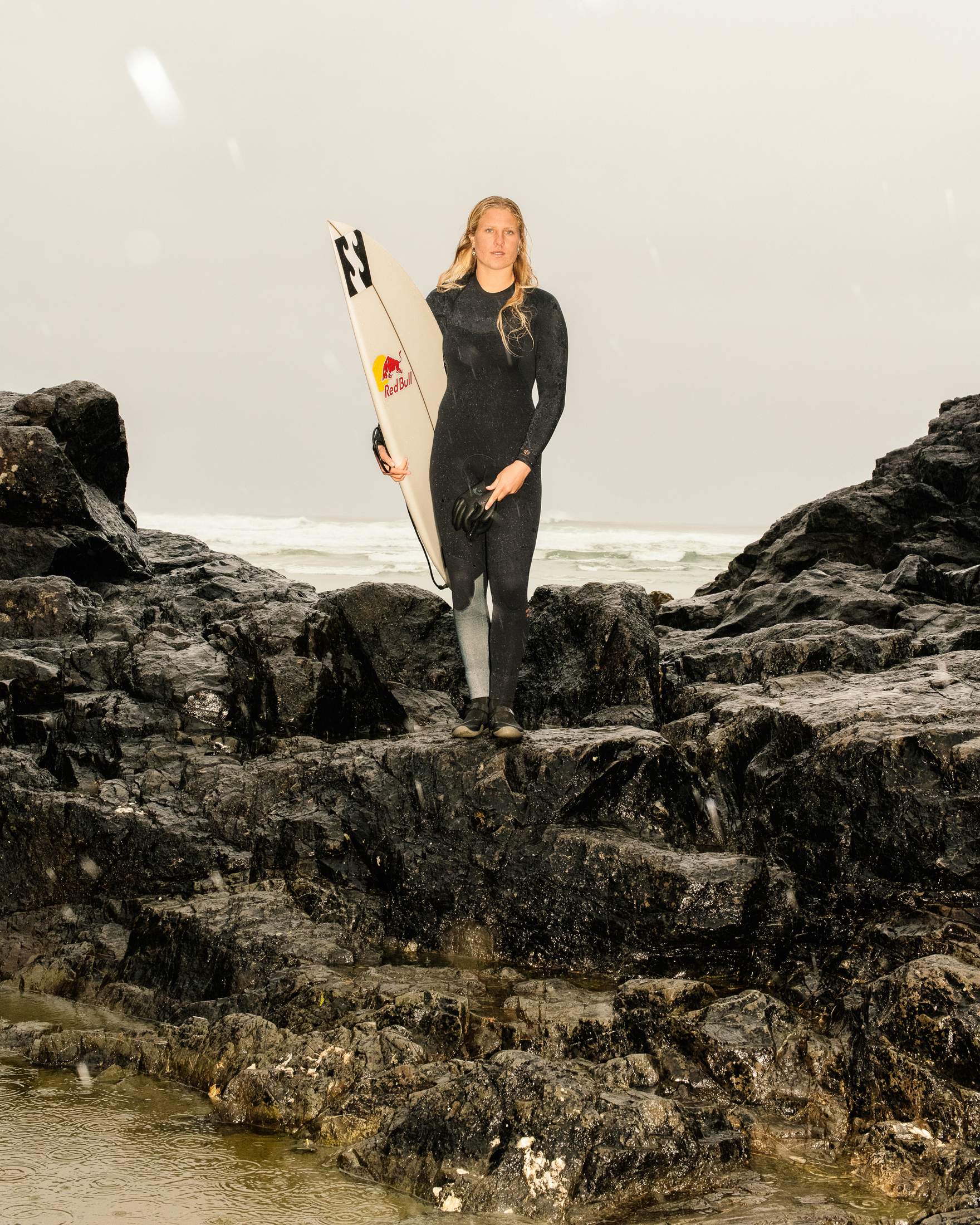
The Seine isn’t exactly known for its world-class waves so a village in French Polynesia will host the surfing heats at this year’s Games. Riding the swell at Teahupo’o, Tahiti, will be Sanoa Olin, the first Canadian surfer to compete at an Olympic level. “If it’s big and bombing, you can’t think about tactics,” she says, referring to the area’s unforgiving waves. “It’s more about focusing on what’s within my control, making it as simple as possible and connecting with the ocean.”
When the Olympics added surfing to its roster in 2020, Canada failed to make the cut. The sport remains rather niche in the country but the town of Tofino, on the western coast of Vancouver Island, has become a somewhat unlikely surfing hub over the past few decades. About a fifth of residents of the small fishing community regularly paddle out. Olin learned to surf against the backdrop of Tofino’s mossy pine forests and snow-capped mountains. That might sound idyllic but the water there is deathly cold, hovering at about 8c – rubber boots, a hood and a thick wetsuit are essential parts of Olin’s training armoury. “Still, we get waves every day of the year,” says the surfer.
Olin will have little need for her wetsuit in Tahiti. She qualified for the Olympics at a competition in Chile last October, posting a higher wave score than that of the reigning gold medallist, US surfer Carissa Moore. There’s an appealing urgency in Olin’s style. She tends to cut her board back and forth against the lip of the wave, trailed by a spit of sea spray. It’s as if, even in the more clement waters of the Tropics, she is trying to keep herself moving, to stay warm.
Team Canada might only have one surfer participating in this Olympics but Olin’s presence could help to bring new momentum to the sport at home. “It underscores the fact that surfers can also be professional athletes,” she says. The waves in Tofino lack the height or temperature of those in California but Olin’s efforts to get the most out of them taught her a thing or two about resilience. “It’s about always trying to see the positives,” she says. “And finding the excitement in everything, whatever the conditions.”


